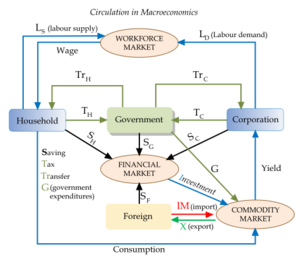State facts for kids
A state is like a big team that manages a specific area of land. Think of it as the main group that has control over a territory.
Every state usually has three main parts:
- It controls a certain territory (a piece of land).
- It has a group of people living there.
- It has special institutions or groups that make and enforce rules for everyone.
States can have different kinds of government, like a republic (where people vote for leaders) or a monarchy (where a king or queen rules). Sometimes, a state is a whole country on its own. Other times, many states work together to form a country, like the United States. Most states also have armed forces (an army), civil service (people who work for the government), laws, and police to keep things in order.
Contents
How States Began
Early States
The very first states were simply groups of human settlements. Imagine a group of farmers and merchants working together. They could be called 'states' because they had people who controlled them and kept them safe.
Later, more organized states appeared. For example, early Egypt was a monarchy led by a Pharaoh. After that, bigger states focused on their military, like the Babylonian Empire or the Roman Empire. But some of the most famous early states were the Ancient Greek states. They were known for their freedom, writing, and early forms of democracy.
From Old Empires to New States
When the big, military-focused Roman Empire ended, many smaller states appeared. Each of these was also controlled by a king and had its own army. These states often fought each other.
However, when people inside a state started fighting among themselves (this is called a Civil war), the kings realized they needed to make peace. This led to the creation of parliaments, which are groups of people who help make laws and decisions.
States Today

Modern states, much like the ones we see today, started appearing in the late 1400s. Some of the important early modern states in Europe included:
- England under the Tudors
- Spain under the Habsburg family
- France under the Bourbons
- Russia under leaders like Catherine the Great
These states worked hard to improve their politics and economies. They became more and more like today's states. They set clear borders for their lands. They also worked with powerful groups inside the state, like the Church or the nobility. To become stronger and more stable, they created proper armies, tax systems, and embassies (offices in other countries).
Different Kinds of States
States can generally be put into two main groups: democracies and dictatorships. In a democracy, people have a say in how they are governed. In a dictatorship, one person or a small group has all the power.
However, just because states are in the same group doesn't mean they are exactly alike. For example, Iran, Pakistan, France, Germany, and the United States of America are all states. Each one sees itself as a democracy, but they all have different ideas about what "democracy" truly means.
Even two democratic states can be very different. One might have a strong, well-trained police force or army, while another might not. So, the word 'state' tells us about the type of government, but not everything about the country itself.
Sub-Categories of States
There are many more specific types of states that come from democracy and dictatorship. Some of the main ones are Pluralism, Marxism, and Institutionalism.
What is Pluralism?
Pluralism has been very popular in the United States. It sees the state as a neutral place where different groups can settle their arguments. Pluralism suggests that not all people are equal, but it still allows each group to tell the state what they want. A state like this is sometimes called a polyarchy.
In a pluralist state, politics, the military, and the economy all work together. This means that power is 'spread out' among the people who live there.
What is Marxism?
Marxism is an idea that supports the rights of workers and laborers. It was started by Karl Marx and Friedrich Engels. Marxism does not believe that a state is there to protect businesses. It also doesn't see the state as a neutral place for arguments.
The main goal of a Marxist state is to protect the working class and improve their financial situation. A Marxist state focuses on sharing resources and planning the economy to make sure workers are well-off.
What is Anarchism?
Anarchism is a belief where a group of people want complete freedom and do not think a state is needed at all. Anarchists are similar to Marxists because they don't believe everyone is equal. However, unlike Marxists, anarchists believe a country can work without any organizations or government. They think that law and order are not necessary.
Anarchists, like Bakunin and Kropotkin in the 19th century, often want some parts of Marxism but without all its rules. They want workers to manage themselves and get paid for what they produce, instead of just getting wages.
Related Pages

